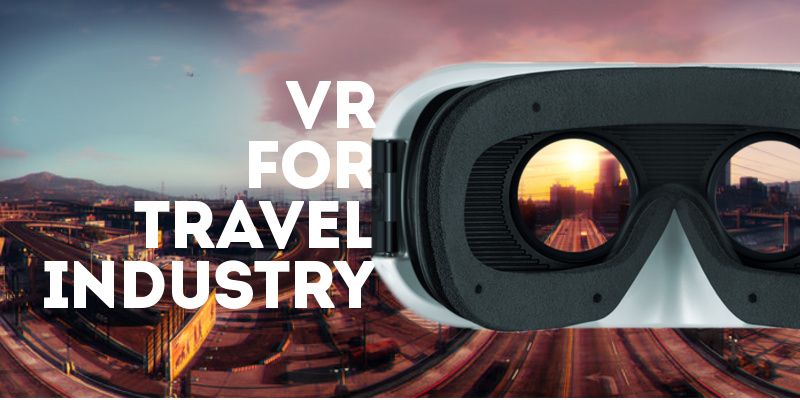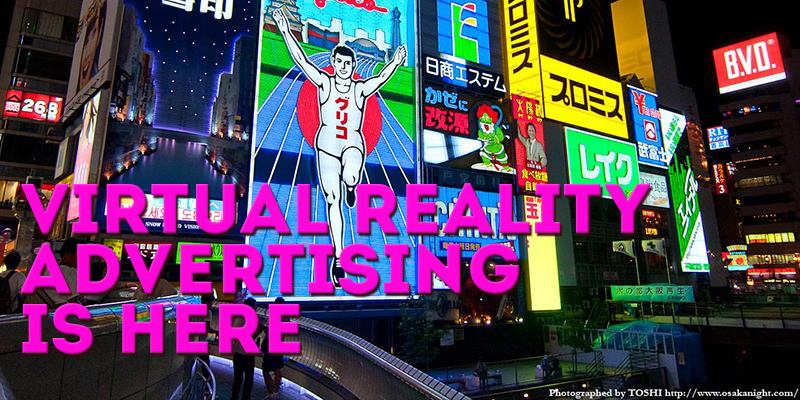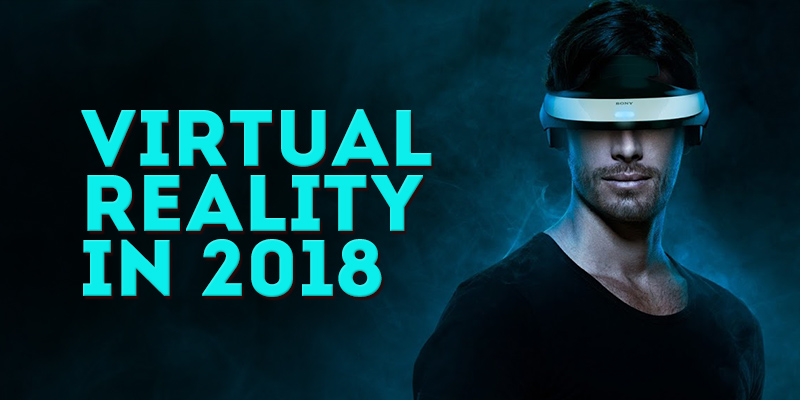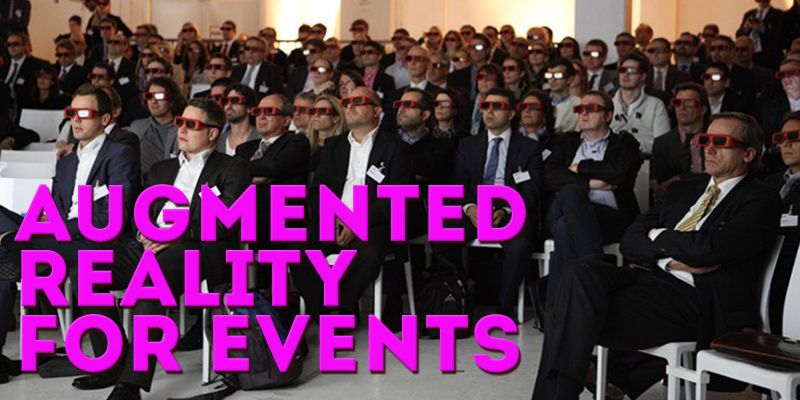Mental illness affects one in four people across the world, making it one of the most pressing issues of our day. The prevalence of wars, economic instability, social tensions, and instances of random violence across the globe have pushed many past the point where they can cope effectively. For those who seek therapeutic solutions to restore their emotional wellbeing, virtual reality therapy offers new hope.
Even the American Psychological Association (APA) has determined VR “particularly well suited to exposure therapy”, dispelling whatever doubt or criticisms may be looming.
A solid understanding of VR therapy is crucial for mental health care providers, if they are to deliver the most effective treatments available, today. In this article, we will explore this emerging field, and see a few examples of how VR technology is already establishing itself as the most effective therapeutic tool to come along in decades.
But first, let’s look closer at how virtual reality works.
What is Virtual Reality Therapy?
VR Therapy Basics
As the therapeutic application of virtual reality technology evolves, so will the ways it can be used to treat certain psychological disorders. For now, VR headsets and immersive software are being used primarily for the treatment of anxiety disorders using a technique knowns as Virtual Reality Exposure Therapy (VRET).
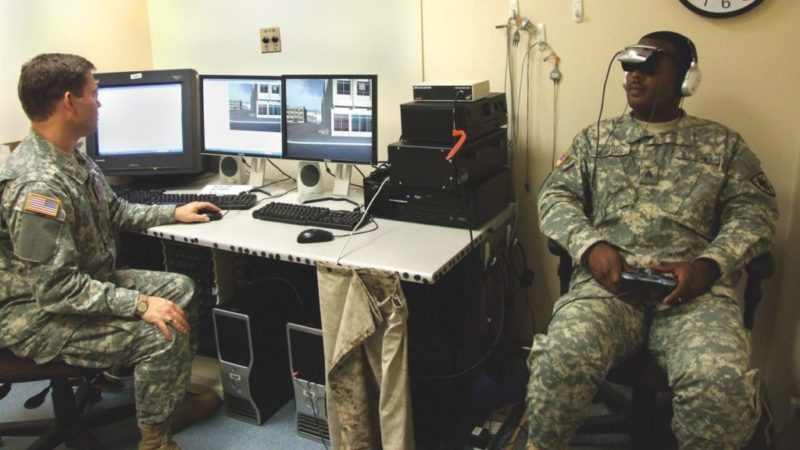
Virtual Reality Exposure Therapy
Bravemind Project
Like conventional anxiety-treatment methods, VRET works by exposing patients to their anxiety triggers within a controlled environment. As with any exposure therapy, the objective is to condition patients to respond positively to events that bring about their particular anxiety, rather than experiencing physiological stress associated with the original trauma that caused their anxiety disorder. However, the immersive and interactive power of VR offers numerous benefits beyond conventional treatment methods:
- VR technology enables mental health practitioners to design highly individualized treatment plans based on the unique needs of their patients.
- VRET is superior to conventional treatment methods in allowing patients greater control over their own exposure. Virtual reality experiences can be designed to be highly interactive, allowing patients to maintain a sense of control even as they experience anxiety triggers.
- VRET offers a drug-free method of reducing trauma-related anxiety.
- A well-designed VR treatment program can offer improved cost-effectiveness over conventional treatment programs.
- The immersive power of VR provides a more engaging and more authentic experience, which results in greater effectiveness.
- Unlike conventional anxiety-treatment programs, VR apps empower patients to continue their own treatment at home, which significantly increases the long-term effectiveness of the treatment.
VR therapy will not in all cases replace conventional treatment methods. But even as an adjunct therapy, it offers exciting advantages over standard treatments, alone.
Full Sensory VR Therapy
VRET can do more than provide visual simulations of scenes that trigger patients’ anxiety. Although the immersive aspect of VR, alone, is a powerful tool, more elements can be added to a treatment program to reduce its duration and improve its long-term effectiveness.
In addition to life-like three-dimensional graphics, VRET can expose the patient to a number of stimuli that simulate the user’s real-life anxiety triggers. Depending on the hardware used, various combinations of the following triggers can be produced:
- Sounds
- Tactile sensations
- Smells
- Wind
- Temperature extremes
- Acoustic effects
- Tilting/dropping
- Moisture or rain
For example, treatment of battlefield PTSD can not only submerge the patient in an authentic 360-degree battlefield. It can also simulate the smell and heat of artillery fire, along with simulated acoustic shockwaves as enemy artillery “explodes” near the patient. No other technology or therapy method can match the realism VR offers.
Of course, therapists monitor the patient’s heart rate, respiration, and other vital signs during treatment. If the patient becomes too anxious during the session, the therapist can cut the session short, or modify the exposure scenes.
Advanced treatment systems will eventually monitor the user’s physiological response and tailor the VR session in real time to achieve the most optimum result. Actually, the technology exists, now, to support such treatment programs. All that is needed is for developers to innovate in this crucial area.
Dell, for one, is providing a $100,000 grant for the University of Southern California’s Institute for Creative Technologies. UCLA will use the grant to advance itss virtual reality exposure therapy prototype, called Bravemind. The prototype focuses specifically on treating war veterans suffering from post-traumatic stress symptoms.
Disorders Treated By VR Therapy
Virtual reality exposure therapy for PTSD is one of the most common uses of VR in the therapy industry, but many other applications also exist. Through careful program design and some creative technical innovation, VR can be used to treat a wide variety of phobias and disorders. Here is a partial list of those:
- Post Traumatic Stress Syndrome (PTSD)
- Attention Deficit Disorder (ADD)
- Attention Deficit Hyperactivity Disorder (ADHD)
- Obsessive Compulsive Disorder (OCD)
- Agoraphobia (fear of places, especially public places)
- Acrophobia (fear of heights)
- Arachnophobia (fear of spiders)
- Pteromerhanophobia (fear of flying)
- Glossophobia (fear of public speaking)
- Panic attacks
- Sleep disorders
- Autism
- Pain management
- Stage fright
- Mood disorders
- Addictive behaviors
The list of phobias and other disorders numbers in the hundreds. Fortunately, VR can effectively treat the majority of these economically and effectively.
As professionals learn to use virtual reality therapy for phobias, anxiety disorders, mood disorders, pain management, and other patient needs, the technology will mature to include even more effective solutions.
VR Therapy Solutions
The prevalence of emotional and psychological disorders has created a wide and deep market for products that promise improved results, including VR technology. Here are some examples of apps and professional platforms that provide VR therapeutic solutions.
Examples of Clinical VR Therapy
Here are a couple of examples of VR therapy being used by large-scale medical facilities.
Cedars-Sinai, an early adopter of VR technology for healthcare, has partnered with a Los Angeles technology provider to develop VR-based therapeutic solutions for the hospital’s patients. The project focus is on helping patients who suffer from anxiety disorders, and those who need assistance with pain management. In one study, patients reported a 24% drop in pain scores after using the therapy.
Duke Psychiatry and behavioral Sciences offers VR therapy for those afraid of heights, elevators, thunderstorms, flying, and who harbor fears of public speaking. Duke, a world-renown hospital and medical research center, provides the therapy within the therapists offices.
VR Therapy Apps
VR offers a tremendous advantage over conventional treatment methods — mobility. Not only can patients benefit from self-guided treatments outside the clinic, but persons who may have not sought professional assistance might find relief in one of the many therapy apps on the market. Here are just a few:
Arachnophobia
Arachnophobia offers self-guided exposure therapy for those who have an irrational of spiders. With five levels of exposure, the user is exposed to an increasing number of spiders in the room. As if that were not enough of a stresser, you are not allowed to move your hands or arms during the session. Over time, you can condition yourself to spiders being near you — without your fight or flight response kicking in and causing you to scurry frantically in search of the nearest shoe.
Fear of Heights
A large percentage of the population experiences a fear of heights. From mild dizziness when looking out of a second-story window to full panic when riding an escalator, most of those who suffer would try anything to avoid triggering their anxiety.
Richie’s Plank Experience places you on a plank, 80 stories above ground. You are encouraged to use a physical plank for added immersion. For those who might be afraid of both heights and spiders, you can elect to have spiders waiting at the end of your plank.
Samsung offers two 360-video apps designed to help users overcome the fear of heights. CityScapes and Landscapes allow users to experience an elevator, skywalk, virtually created tower, cliff driving, heli-skiing, and crossing a suspension bridge — all using 360-degree video.
Fear of Public Speaking
The fear of public speaking grips businessmen and women, authors, and even celebrities. Limelight gives you the option of appearing in a business meeting, small classroom or in a large hall as you give a speech. You can select audience size, and even adjust the mood of the audience.
Relaxation
For many people, simply being able to relax is the one of the greatest challenges. Deep encourages a sense of tranquility by placing the user in a serene underwater world where stress, anxiety, and depression can melt away.
Designed for the HTC Vive, Samsung Gear VR, and Oculus Rift, Guided Meditation VR gives the user a choice of peaceful environments from around the world, from a lush rainforest to a Japanese temple, in which to relax and recharge.
Relax VR is an iPhone app that allows the user to enjoy a wide range of calming visual and sound experiences, including the beach, ocean, wind, waves, streams, crickets, and more. Experiences are set in one of ten locations, from Wineglass Bay, Australia, to a tropical Beach in the Philippines.
Sleeping
Created by Virtually Better, Inc., Relax Soothe Sleep: The Nap App is designed to help children deal with sleep disorders. Through a series of fun lessons, videos, and exercises, the child learns ways to prepare for a good night’s sleep. A parent section allows the parent to track their child’s progress.
VR Therapy Platforms
While few professional therapists might be willing to admit that VR could disrupt their industry, that hasn’t stopped them from adopting it. The following is but a short list of VR therapy platforms utilized by professionals to help treat their patients.
Applied VR provides clinicians with the VR hardware and training to use VR in the treatment of anxiety, and for pain management. The subscription-based service includes 20+ content modules for treating a variety of patient needs.
Limbix helps practitioners to treat patients suffering from anxiety, phobias, and who need pain management techniques. Real-world footage is incorporated into 306-degree videos designed to help patients deal with the challenges they face.
Psious offers more than exposure therapy experiences, it provides a variety of reports, graphs, and other aids to help monitor patient progress.
Verapy provides the platform, VR viewer, and software needed to treat patients with various disorders and rehabilitation needs. A complete set of patient tracking and data analysis tools are included.
Even though apps may help certain individuals in self-guided therapy, they should never be used as a substitute for professional diagnosis and treatment.
How Can Appeal-VR Help?
Virtual reality offers relief for hundreds of thousands who suffer from anxiety disorders and who need help with non-narcotic pain management. VR therapy has already proven its value in treating patients who do not respond to conventional therapy, and in augmenting conventional treatment programs. Furthermore, collaborations between technology providers, insurance companies, and healthcare providers ensure that technological and financial investment resources will be there to grow this important market.
But where do you stand? Are you prepared to transform the psychotherapy industry, or will you watch as others turn your ideas into profitable solutions?
If you are ready to turn you concept into a marketable VR therapy product, we invite you to partner with AppReal-VR. We bring innovative solutions to companies around the world, and we specialize in VR and AR technology. Our world-class developers are experts in VR platforms, mobile app development, and in creating feature-rich solutions that are also scalable and robust.
Why not contact us today for a no-cost consultation?

